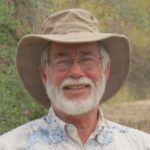BEBPA PRESENTS:
13th Annual BEBPA EUR Bioassay Conference
Speaker Abstracts
September 21-24, 2020
Virtual Conference!
SPEAKERS
Abstracts (Alphabetical by Speaker/Instructor/Presenter)
Handling Product References for Potency Assays: A Review of the BEBPA White Paper
- Speaker: BEBPA Expert Working Group – Represented by Seth Foltz, Consultant, Eli Lilly and Company
- Abstract: The potency of a product is considered a critical quality attribute (CQA). As such, sponsors are responsible for developing a quantitative method to ascertain the potency of each manufactured commercial batch. Potency assays are unique in several aspects; however, two aspects are critically important when considering how to handle the product reference for these assays. Firstly, most potency assays are relative potency assays. This signifies that reference material defines the ultimate unitage assigned to test samples. Therefore, the potency assignment of reference material for primary and secondary references must be undertaken with great care both statistically and practically. Additionally, these references should be routinely monitored, and their potency verified in an on-going fashion. Secondly, the entire dose-response of the reference material is compared to the entire dose-response of the test material. It is a critical method system suitability criterion that these two dose-response be determined to be similar prior to calculating the batch test sample potency. Therefore, it is important that product reference have a representative biological response and that the dose-response curve be an appropriate one for comparison. These are two examples of the complexity of selecting and qualifying product references which are suitable for complex biotechnology products. BEBPA has convened an expert working group to work on a white paper suggesting various approaches and concerns regarding the selection and maintenance of product reference material. This talk will cover the highlights of this white paper.
- Contributing Authors: Laureen Little, Jane Robinson, Mike Sadick, Mike Merges, Sian Estdale, Seth Foltz, Matt Borer, Peter Rigsby, Marie Gottar-Gullier, Zeban Kolen, Stan Deming, Perceval Sondag, Dorota Bulik
- (Day 1: Handling Product References and Performing In-Depth Product Characterization Session)
Insights in Unspecific T-Cell Activation by CD3-Homodimers via Cell-Based Characterization
- Speaker: Alexander Berger and Matthias Kania, Boehringer Ingelheim Pharma GmbH & Co. KG


- Abstract: Within recent years, the percentage of bi- or multi-specific antibodies, which target more than one antigen, increased significantly to develop better curements for several diseases. Within these new antibody formats, there is also a population of antibodies found targeting T-cells via capturing the CD3-receptor. These antibodies bind the respective target cell and additionally a T-cell, bringing the cells into close proximity, so that the T-cell can recognize the target cell and induce cell lysis.
During production of this kind of multi-specific antibodies, the assembly could go wrong, and mis-paired species occur. Especially, in the production of multi-specific CD3-antibodies there is a miss-paired species that should be taken care of: CD3-homodimer antibodies. These antibodies only have CD3-binding capabilities and could therefore either crosslink CD3 receptors on the same T-cells or several T-cells. Within the literature it is described that this process can lead to unspecific T-cell activation, which in turn could lead to secretion of cytokines and in worst case to cytokine release syndrome.
Due to these reasons, these miss-paired species should be removed during downstream process. However, according to “Guidance for industry” these homodimers, which relate to product-related impurities, should be monitored for all processed batches.
Within this context, we have characterized intracellular processes and T-cell activation using bispecific antibodies and CD3-homodimer antibodies. Additionally, the impact of CD3-homodimer antibodies on T-cells was investigated, ranging from different phenotypic growth behavior, to different response patterns. Our focus also included to find ways to detect CD3-homodimer antibodies within drug substance. Here we have found several ways to analyze for CD3-homodimer antibodies, which we investigated and tried to link to cytokine release.
These efforts lead to a more detailed view and better understanding concerning CD3-homodimer antibodies and their potential effects in vivo. - (Day 1: Handling Product References and Performing In-Depth Product Characterization Session)
Case study: Bioassay Development: IND to CTA
- Speaker: Rens Braster, Genmab B.V.

- Abstract: (Pending)
- (Day 2: Assay Development Session)
Outliers in Bioassay 2: The Effects of a Single Blunder in Down-The-Plate Dilution
- Speaker: Stan Deming, Statistical Designs

- Abstract: As John K. Taylor has pointed out, “There are three sources of error in measurements and they can be classed as systematic, random, and just plain mistakes … The third kind of uncertainty may be called blunders. They happen when mistakes are made, knowingly or unknowingly. Errors resulting from them are not statistically manageable and, in fact, they can invalidate an otherwise good set of data. A measurement system that is unstable and fraught with blunders is not in statistical control and cannot be relied upon to produce useful data.”
Many existing outlier approaches in bioassay assume that all errors are random. These approaches ignore the effects of blunders. Interestingly, a blunder can be a kind of outlier event.
One effect of a single blunder in down-the-plate dilutions is to mask the presence of traditional outliers. A single blunder in down-the-plate dilutions can distort the reported relative potencies of samples on the plate.
NOTE: If you choose to attend this talk, you must promise to use the information for good and not for evil. - (Day 4: Outliers: Their Significance and How to Deal with Them in a Regulated Environment Session)
Cell Characterisation and Optimisation of Cell Handling Methods for the Development of Robust Bioassays
- Speaker: Kate Getliffe, PsiOxus Therapeutics
 Abstract: PsiOxus Therapeutics is an early phase cancer gene therapy company with several ongoing clinical trials involving our proprietary Tumour Specific Immune Gene (TSIGn) virus platform and its parent oncolytic virus, enadenotucirev. Our platform characterisation, release and stability tests include two main cell-based bioassays: a virus infectivity assay and an oncolytic potency assay. This presentation will describe an approach for improving the robustness of these bioassays by characterising the colorectal adenocarcinoma cell line (HT29 ATCC HTB-38) used to run them and optimising specific cell handling methods. The cell characterisation has been in terms of cell confluency (measured digitally), cell cycle status, metabolite concentrations in culture media and cell viability in monolayers. The handling methods have included cell counting, culture media supplementation, cell dissociation from flasks, cryopreservation and cell thaw, all investigated using DoE.
Abstract: PsiOxus Therapeutics is an early phase cancer gene therapy company with several ongoing clinical trials involving our proprietary Tumour Specific Immune Gene (TSIGn) virus platform and its parent oncolytic virus, enadenotucirev. Our platform characterisation, release and stability tests include two main cell-based bioassays: a virus infectivity assay and an oncolytic potency assay. This presentation will describe an approach for improving the robustness of these bioassays by characterising the colorectal adenocarcinoma cell line (HT29 ATCC HTB-38) used to run them and optimising specific cell handling methods. The cell characterisation has been in terms of cell confluency (measured digitally), cell cycle status, metabolite concentrations in culture media and cell viability in monolayers. The handling methods have included cell counting, culture media supplementation, cell dissociation from flasks, cryopreservation and cell thaw, all investigated using DoE.
In terms of cell handling methods, critical factors for cell counting, culture media supplementation, cell dissociation, cryopreservation and cell thaw were identified in DoE screening experiments. The most critical constituent for cell culture medium (glutamine source) was optimized as part of the screening experiment and a minimum threshold of 2 mM was identified for the infectivity assay and cell growth rate. Cell growth and assay performance were severely affected when lower concentrations of glutamine source were maintained during both culture and assays.
During the cell characterisation studies, glutamine was confirmed as an important resource for the cells and its concentration was found to correlate with cell confluency and cell cycle status as the cells were cultured. Cells maintained under standard conditions (e.g. reaching 50-100% confluency prior to passage) tended to deplete their glutamine source after 4 days in culture whereas cells cultured under sub-confluent conditions (e.g. reaching <60% confluency prior to each passage) never exhausted their glutamine supply. These culture differences were difficult to link conclusively to assay performance once the glutamine source was replenished, although stained cell counts in the infectivity assay, the EC50s of dose response curves in the potency assay and cell growth rates in general were occasionally affected.
Robustness and method optimization studies for the infectivity and potency assays are still ongoing, but some approaches for reducing variability in these assays, using the data generated from the HT-29 cell characterization and cell handling studies, will be discussed.- (Day 2: Assay Development Session)
Bioassay Automation: From Equipment Qualification to Automated Assay Validation
- Speaker: Patrick Heim, Hoffmann-La Roche Basel Ltd.

- Abstract: Set-up of automated bioassays requires substantial effort, in particular, if intended for use in a GMP-environment. Equipment qualification or calibration -as carried out by the vendor- might not fulfill GMP requirements. Therefore, it is important to incorporate further calibration procedures as well as functional scripts that cover e.g. balance and pipetting channel calibration within your system.
In addition to release the overall robotic system for GMP use, automated bioassays have to be adapted and optimized. A snapshot of our assay optimizations will be provided in this presentation. Overall, we follow the like-for-like approach, where a bioassay procedure can be performed either manually or automated with comparable quality. Parameter for quality assessment are e.g. precision, accuracy and the shape of dose-response-curves. This presentation will be rounded up by a statistical comparison of manual and automated bioassay execution that leads towards assay validation. - (Day 3: Lifecycle: Early Development to Post Commercialization Session)

Biosimilar Development: Approaches for Analytical Biosimilarity
- Speaker: Xu-Rong Jiang, AstraZeneca
- Abstract: (Pending)
- (Day 2: Assay Development Session)
Approaches for Site-Specific Integration Using Lentiviral Vectors in Bioassay Development
- Speaker: Darren Kamikura, Bristol-Myers Squibb
 Abstract: A cell-based bioassay is essential for the characterization of complex bioproducts and is a regulatory expectation as a lot release and stability test for late stage and commercial programs. Because these cell-based assays may be in use for the lifetime of a product, the cells chosen to support bioassay development are critical. Immortalized cells may exist which are suitable for development of cell-based bioassays. However, it can sometimes be difficult to find an immortalized cell line which both expresses the target of interest and is also amenable for use in routine QC testing. In these instances, cell line engineering can be a critical tool for bioassay development. Case studies representing each instance will be presented.
Abstract: A cell-based bioassay is essential for the characterization of complex bioproducts and is a regulatory expectation as a lot release and stability test for late stage and commercial programs. Because these cell-based assays may be in use for the lifetime of a product, the cells chosen to support bioassay development are critical. Immortalized cells may exist which are suitable for development of cell-based bioassays. However, it can sometimes be difficult to find an immortalized cell line which both expresses the target of interest and is also amenable for use in routine QC testing. In these instances, cell line engineering can be a critical tool for bioassay development. Case studies representing each instance will be presented.- (Day 2: Assay Development Session)
USP1220 for Analytical Lifecycle: Its Application for Bioassay?
- Speaker: Pierre Lebrun, Pharmalex Belgium

- Abstract: USP 1220 guidance on analytical lifecycle is written with a focus on small molecules assay (HPLC, etc.). This talk will look at the interesting pieces that can be used to help in the development, the qualification/validation and the continued verification of Biological quantitative assays.
- (Day 3: Lifecycle: Early Development to Post Commercial Session)
Data Integrity and Potency Bioassays

- Speaker: Laureen Little, BEBPA
- Abstract: (Pending)
- (Day 4: Outliers: Their Significance and How to Deal with Them in a Regulated Environment Session)
Exploiting Structure-Activity Relationships for an In-Depth Characterization of Biotherapeutics
- Speaker: Enrico Mazzarella, Merck KGaA, Darmstadt, Germany

- Abstract: The CQAs assessment workflow is associated to a tailored and extended analytical monitoring of the selected attributes. Concerning the biological activity and the efficacy, the testing carried out via a single method may not always provide all the relevant information for the in-depth characterization of a complex biological entity. Therefore, for example, during dedicated characterization studies in support of the product development, it is advisable the set-up of dedicated degradation and variants studies as well as the application of a well-designed bioanalytical strategy in order to gain an in depth understanding of biochemical and biophysical properties of an antibody.
It is proposed here a strategy for studying structure-activity relationship, consisting in the development and application of a dedicated multi-techniques panel to be applied for the extended biological characterization of a therapeutic IgG1 monoclonal antibody. The approach is based on the enrollment of a series of functional assays and orthogonal methods to assess the biological activity and behavior of samples under investigation, in order to overcome the possible knowledge gaps related to the data obtained applying a single technique and analyzing attributes one by one.
The outcome is a relevant information package regarding the correlation between structural elements and the biological functions. The consequence is an increase in product knowledge with impact on control strategy and product value. - (Day 1: Handling Product References and Performing In-Depth Product Characterization Session)
Outliers in Bioassay 3: The Effects of a Consistent Blunder in Down-The-Plate Dilution
- Speaker: Mike Merges, Autolus Therapeutics

- Abstract: As John K. Taylor has pointed out, “There are three sources of error in measurements and they can be classed as systematic, random, and just plain mistakes … The third kind of uncertainty may be called blunders. They happen when mistakes are made, knowingly or unknowingly. Errors resulting from them are not statistically manageable and, in fact, they can invalidate an otherwise good set of data. A measurement system that is unstable and fraught with blunders is not in statistical control and cannot be relied upon to produce useful data.”
Many existing outlier approaches in bioassay assume that all errors are random. These approaches ignore the effects of blunders. Interestingly, a blunder can be a kind of outlier event.
One effect of a single blunder in down-the-plate dilutions is to mask the presence of traditional outliers. A single blunder in down-the-plate dilutions can distort the reported relative potencies of samples on the plate.
NOTE: If you choose to attend this talk, you must promise to use the information for good and not for evil. - (Day 4: Outliers: Their Significance and How to Deal with Them in a Regulated Environment Session)
Outliers in Bioassay 1: The Effects of a Blunder in Top-Well-Transfers

- Speaker: Michael Sadick, Precision BioSciences
- Abstract: From a bioassay perspective, replicate columns of a sample contain replicate information. For example, wells A1, A5, and A9 might be replicates of the first dilution of triplicate subsamples of a reference standard. It is commonly believed that the response for these three wells should be identical, and any deviation from their “true” value is considered to be simple random error. This is the environment within which preliminary outlier tests are often applied (Dixon’s Q test, for example) to see if one of these triplicate responses is discordant with the other two.
From a statistical perspective, this is an incorrect understanding. Because the amounts placed in each top well can vary, the results down each column can differ by a constant ratio from the results down other columns of the same material. As a result, when preliminary outlier tests are applied to replicates “across the row” (e.g., wells D2, D6, D10), it is often the case that going down the rows with this method results in wells from the same column being rejected consistently.
Thus, from a statistical perspective, it is more appropriate to treat each column as a separate sample. The relative potencies of the triplicate columns can then be compared to assess the variability of the top-well transfers. If one of these relative potencies appears to be discordant with the others, it can then be investigated as a different kind of outlier. - (Day 4: Outliers: Their Significance and How to Deal with Them in a Regulated Environment Session)

Design of Multiple Types of Experiments for Potency Assays
- Speaker: Perceval Sondag, MSD
- Abstract: ● DoE for Assay Optimization: Short introduction of DoE for assay development and optimization.
● DoE for Assay Validation: do an “all in one” design rather than separate experiments for each validation criteria.
● DoE within a plate: How to choose concentration ranges to fit 4PL curves. - (Day 3: Lifecycle: Early Development to Post Commercial Session)
Developing Horizontal Standards: Bioassays for TNF-Alpha Antagonists
- Speaker: Jaana Vesterinen, Finnish Medicines Agency

- Abstract: The European Pharmacopoeia Monoclonal Antibody Working Party (MAB WP) is composing a general chapter on Cell-based assays for potency determination of TNF-alpha antagonists. The text will be based on the results of the collaborative study organised within the MAB WP.During the collaborative study, 9 laboratories in 8 countries tested the performance of three assays on seven different TNF-α antagonist products. The tested bioassays were: A cytotoxicity assay, a reporter gene assay, and an apoptosis assay. Each bioassay had initially been validated for a particular TNF-α antagonist, and either Ph. Eur. reference standards (BRPs) or in-house standards, provided by drug manufacturers, were used as controls in the assays. Seven TNF- α antagonist were tested. Each product was tested in each assay. A detailed study protocol was provided for each assay, and the testing laboratories returned their results to EDQM for centralised statistical analysis.
The results of the collaborative study demonstrated the proof of concept: each assay works equally well for all anti-TNF-α products tested. The statistical analysis of the results from the collaborative study verified the suitability of each assay as regards assay specificity and precision (NMT 10-20%) for all tested products. The collaborative study has provided the information needed to define not only the common analytical expectations but also specific procedures and system suitability criteria within the future general chapter. The draft chapter is intended to be published soon for comments in Pharmeuropa. - (Day 1: Handling Product References and Performing In-Depth Product Characterization Session)
USP Updates: Bioassay Chapters and Assay Lifecycle Update for <1220>
- Speaker: Steven Walfish, US
 P
P - Abstract: The USP bioassay suite of chapters (<1032>, <1033> and <1034>) are based on a lifecycle approach. USP is in the process of developing a General Chapter that defines an approach of applying lifecycle management to assay development and qualification. This talk focuses on how to use these techniques for bioassay development.
The bioassay lifecycle consists of three stages: (1) design and development, (2) performance qualification, and (3) continued performance verification. This contradicts the current thinking in ICH-Q2 that only focuses on the validation step to evaluate the performance of an analytical procedure.
This presentation covers the statistical methods necessary to set a target profile incorporating the measurement uncertainty to establish decision rules. Based on the method development and risk profile, a statistically valid replication strategy is developed to ensure high confidence in assay results. - (Day 3: Lifecycle: Early Development to Post Commercial Session)

